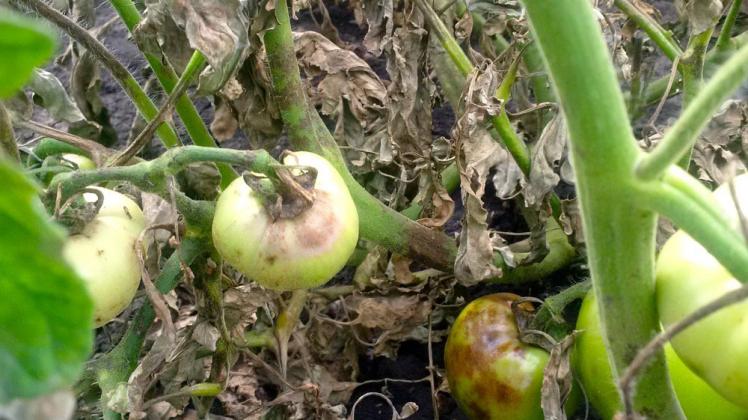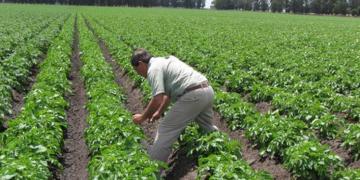Canadá: Manitoba potato growers, gardeners need to scout for late blight
Home gardens can be a source of infection for the fungal disease that can spread to commercial potato fields

Manitoba gardeners need to scout for late blight in their tomatoes and potatoes, not just to protect themselves but the provinces’s 64,500 acres of commercial potato production.
Late blight — the same fungal disease responsible for the Irish potato famine in the late 1840s — was detected July 16 in a potato field near Carberry.
This week there were more than 15 infected fields, Manitoba Agriculture plant pathologist Vikram Bisht said in an interview Aug. 10. Most are in the Carberry area but late blight has also been found near Sydney, Melbourne and Glenboro. The disease was also found in a market garden near Oakville.
“The message to home gardeners is if you… are seeing the (late blight) infection and have not sprayed fungicide the plants will go down and die very quickly,” Bisht said.
“The fruit will also get infected and it will appear with brown spots. They don’t store very well. If your leaves have infection harvest as many of the fruits as you can then destroy the plants. Put them in black garbage bags and keep it them in the sun. After two to three days they should get cooked very well and that will destroy the disease.
“If you throw the plants in the compost pile the plants will not dry quickly enough and will continue to sporulate. Those spores will be a risk to commercial potato producers of Manitoba.”
Check lower leaves
Late blight symptoms are similar on tomatoes and potatoes. Manitoba Agriculture’s website says to look for for small, light to dark green, circular to irregularly shaped, water-soaked spots. These lesions usually appear first on the lower leaves.
“During cool, moist weather, these lesions expand rapidly into large, dark brown or black lesions, often appearing greasy,” the site says. “The lesions are not limited by leaf veins and as new infections occur and existing infections coalesce, entire leaves can become blighted and die within a few days. The lesions may expand down petioles and stems of the plant.”
Late blight lesion on a tomato leaf.
Late blight lesion on a tomato leaf.photo: Vikram Bisht, Manitoba Agriculture
The late blight strain found in Manitoba is US23, which is very aggressive in tomatoes and potatoes, Bisht said. He suspects the fungal disease spread in high winds during during recent thunderstorms.
Although more than 15 cases of the disease have been found in some cases only a few potato plants were infected, Bisht said. The infected plants have been destroyed.
“The growers are trying to keep on top of it with five- to seven-day (fungicide) spray schedule,” he said. “Commercial potato growers currently appear to be managing.
“It would be good to see some dry weather because every three or four days we have rain events and that is creating trouble. The commercial potato growers are at risk basically if the home gardeners do not do a good job (controlling late blight).”
Fungicides available
Home gardeners can control late blight by applying fungicides that contain chlorothalolil mancozeb, he said.
Garden tomatoes and potatoes are also more susceptible to late blight if plants remain damp, which can occur when plants are thick, preventing air circulation. As a result weedy gardens are more at risk, Bisht said.
Bisht also recommends gardeners buy late blight-resistant tomatoes.
Gardeners should buy new certified seed potatoes next spring and plant healthy looking tomatoes.
Infected volunteer potatoes could be a disease source and should be destroyed. Volunteer tomatoes come from seed, which doesn’t harbour the disease.
Late blight was found in Manitoba last year but not until September 11.
So long as the crop is growing it’s susceptible to late blight infection.
Potatoes infected with late blight can rot in storage. Late blight doesn’t rot potatoes, but the damage it causes allows other infections that cause rot to develop.
Treating potatoes with phosphorus acid (Phostrol, Rampart and Confine) as they go into storage can protect them from rot.
Although some fields have suffered due to excess moisture and others have been damaged by hail, most were doing well as of Aug. 12, said Keystone Potato Growers Association Inc. manager Dan Sawatzky.
Fuente: http://www.manitobacooperator.ca/crops/manitoba-potato-growers-gardeners-need-to-scout-for-late-blight/




